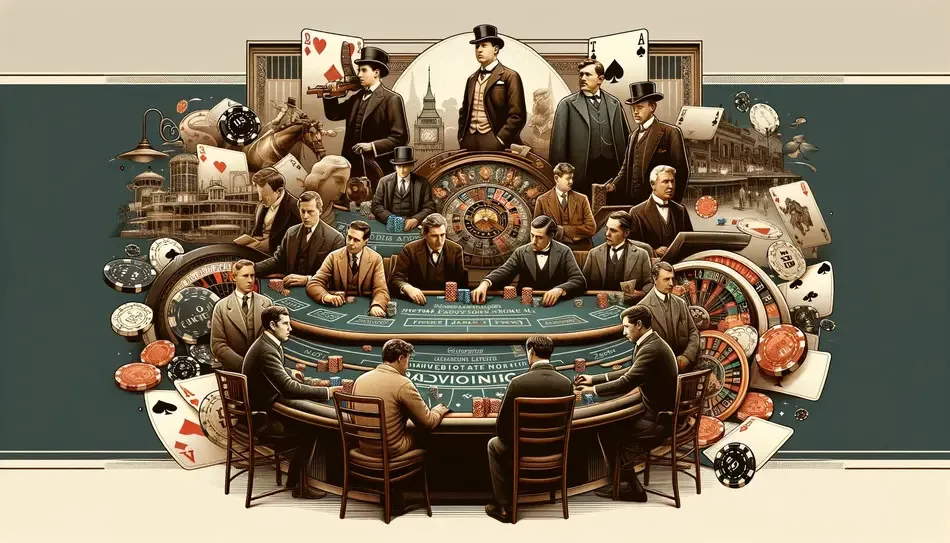
Tracing the Evolution: The History of Professional Blackjack
The game of blackjack, a staple in both brick-and-mortar and online casinos like GoldenPark online casino, has a storied history that intertwines with mathematics, psychology, and technology. This narrative is not just about a game but also about a battle of wits between the players and the casinos, with card counters playing the role of revolutionaries challenging the status quo. Here, we delve into the history of professional blackjack, highlighting the key figures whose genius and innovation have shaped the modern game.
Blackjack, often referred to as 21, has evolved from a simple card game into an arena where strategy and skill can lead to significant financial gain. The journey from casual play to professional blackjack has been marked by the emergence of individuals who have dissected and mastered the game. GoldenPark casino offers a digital platform where the legacy of these pioneers continues to influence strategies employed by players around the world.
Card Counters vs Casino
The tussle between card counters and casinos is a tale as old as the game itself. Casinos, aiming to safeguard their profits, view card counting as a threat to their bottom line. In contrast, players see card counting as a legitimate strategy to tilt the odds in their favor. This ongoing battle has led to the implementation of multiple decks, shuffling machines, and stringent casino policies.
Jess Marcum – One of the First Counters
Jess Marcum’s story begins in the late 1940s when he developed a mathematical system for card counting that proved to be effective against the house edge. Recognized as one of the first to use card counting in a professional capacity, Marcum’s exploits earned him the distinction of being banned from several casinos, a testament to his effectiveness at the tables.
The Four Horsemen of Aberdeen are Underrated Geniuses
The contribution of Roger Baldwin, Wilbert Cantey, Herbert Maisel, and James McDermott, collectively known as the Four Horsemen of Aberdeen, cannot be overstated. In the 1950s, these Army engineers used nothing but desk calculators to devise the first scientifically proven blackjack strategy, laying the groundwork for all future card counting efforts. Despite their monumental contribution, they remain unsung heroes in the history of blackjack.
Edward Thorp – Taking Blackjack to the Next Level
Edward O. Thorp’s publication of “Beat the Dealer” in 1962 marked a watershed moment in professional blackjack. Thorp’s book, which introduced the Ten Count system, was the first to mathematically prove that card counting could be used to overcome the casino’s advantage. Thorp’s appearances on television and successful casino outings brought card counting into the public consciousness.

Julian Braun – Simplifying the Card Counting System
Julian Braun, a computer scientist at IBM, played a pivotal role in simplifying and refining card counting strategies. By running simulations on IBM’s powerful computers in the 1960s, Braun was able to validate and improve Thorp’s strategies, making them more accessible to the average player. His contributions are crucial to the strategies employed by players globally, including those at GoldenPark online casino.
Ken Uston and Other Counters
Ken Uston, a name synonymous with blackjack, took card counting to new heights in the 1970s and 1980s. Not only did he popularize team play in blackjack, but he also fought for the rights of card counters in court, asserting that their strategy was a skill rather than a form of cheating. Uston and his contemporaries like the MIT Blackjack Team further demonstrated the potential of organized, strategic play against casinos.
Conclusion
The history of professional blackjack is rich with tales of ingenuity, mathematical brilliance, and a constant cat-and-mouse game with casinos. From Jess Marcum’s pioneering efforts to the sophisticated operations of Ken Uston and the MIT team, each chapter in this history has contributed to the game’s evolution. Today, platforms like GoldenPark online casino continue to host this timeless game, where the legacy of blackjack’s legends lives on, inspiring a new generation of strategic thinkers and risk-takers.
